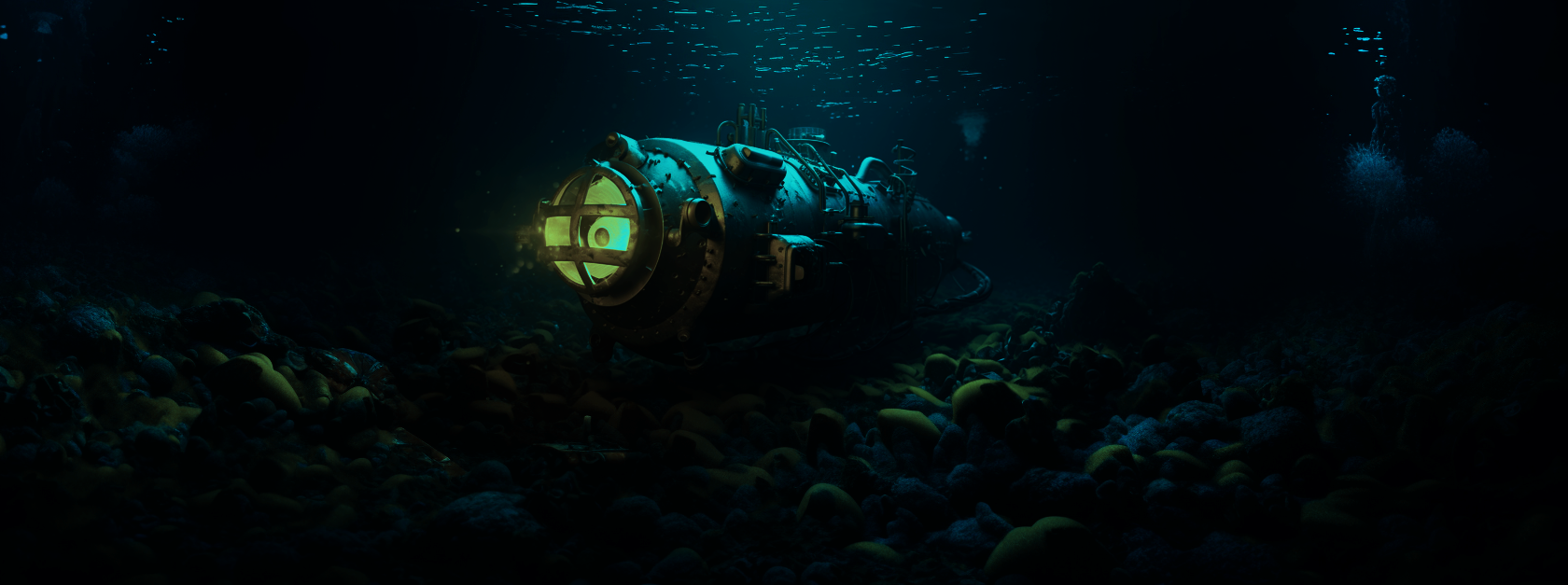
Safety Innovations
New technologies require regulators to think differently about safety. They need to find ways in which to encourage experimentation and yet not do so at the cost of human safety. This is a difficult line to draw - but draw it we must.
This is a link-enhanced version of an article that first appeared in the Mint. You can read the original here. The header image for this post was generated in Midjourney.
On 20 June 2023, the Titan, a 22-foot experimental submersible made mostly of carbon-fibre and titanium, descended into the North Atlantic ocean with five people on board. The vessel had been developed by Stockton Rush, CEO of OceanGate Expeditions, to take wealthy tourists to see the wreckage of the Titanic where it currently lies, around 4,000 metres below the surface of the ocean.
An hour and 45 minutes into the dive, the Titan abruptly lost contact with the surface ship. When it failed to resurface five hours later, an urgent rescue operation was launched to save those on board before its supply of breathable air ran out.
Safety Features
For almost as long as OceanGate has been in operation, questions have been raised about the safety of its operations. The company steadfastly refused to submit its vessels for classification by third-party agencies like the American Bureau of Shipping. Instead, passengers of its vessels were asked to sign legal undertakings to confirm that they understood that their vessel had “not been approved or certified by any regulatory body" and that a dive “could result in physical injury, disability, emotional trauma or death." OceanGate always argued that the cutting-edge innovations incorporated by the design of its submersible Titan were beyond the capacity of regulators to evaluate: “We’re not going to use these outside classification agencies because they slow us down, they’re time consuming, and basically OceanGate knows better."
The current US process for classifying vessels relies on depth validation conducted once every three years. OceanGate claimed to have improved on this process by equipping its vessels with real-time health monitoring systems that alert occupants of a hull breach, allowing them to abort the mission and return to the surface before it’s too late. No other submersible offered these features, went its publicity pitch, allowing a compromised hull to remain undetected until the next depth assessment up to three years later. Another new safety feature was a small vacuum created on the inside of its sub before each dive, so that passengers could verify the integrity of its low-pressure O-ring seal, thus radically lowering the risk of a leak underwater.
Since none of these advanced features was part of traditional classification processes, OceanGate would have received no credit for having deployed them. This and other such examples seem to have been the primary reason why the company decided against submitting its vessels for the standard classification process. That said, had it gone through the usual certification process, the Titan would have been equipped with a transponder and emergency position-indicating radio beacon, which would have made it much easier to locate the submersible once it went missing.
Law of the Sea
One of the reasons why OceanGate got away without having to classify its vessels is that its submersible operated only in international waters. As a result, it is only the ship that transports the submersible out to the middle of the ocean that is required to comply; the submersible itself is not subject to regulations under national laws.
But what we really need to be thinking about is how we should go about regulating new technologies that stretch the limits of our existing regulatory knowledge. If we base certification processes solely on what has worked in the past, we will never come up with modern safety techniques that incorporate all that latest technology makes possible. If we do not re-evaluate certification in the context of new innovations, we will be incapable of regulating technologies whose very operation exceeds the current technical assessing capabilities of certifying agencies.
Innovations in Safety
What we need is a fundamental shift in how safety regulation works. Regulators need to constantly push themselves to stay abreast of new technologies so that they can better mitigate risks. They need to engage with the entities they supervise, evaluate new safety features that evolve and stay up-to-date with new technologies to appropriately highlight risks as they arise. Fresh certification processes must be developed where needed in order to ensure comprehensive coverage.
The balance between regulation and innovation is a delicate one. On one hand, we need to extract as much value as we can from new technologies; and on the other, we need to ensure that these technologies are safe, reliable and of high quality. This requires a fundamental shift in how we think about regulation and certification. Merely relying on what has worked well in the past is no longer sufficient. At the same time, before adopting any new safety feature that companies propose, regulators need to build the technical capability necessary to evaluate them on their merits.
Implosion
Two days after the Titan went missing, a field of debris was discovered near the dive site. Further investigation revealed that the submersible had been destroyed on its way down to the ocean’s bottom in an implosion so violent that all five on board would’ve instantly been vapourised.
The real-time safety features that Stockton Rush had been so proud of were apparently unable to prevent this catastrophic failure. The incident could lead to a doubling down on traditional ways of doing things, with the Titan held up as an example of all that can go wrong if we deviate from a tried-and-tested path.
I hope this doesn’t happen, and that instead, we try to bring more innovation into regulation.



